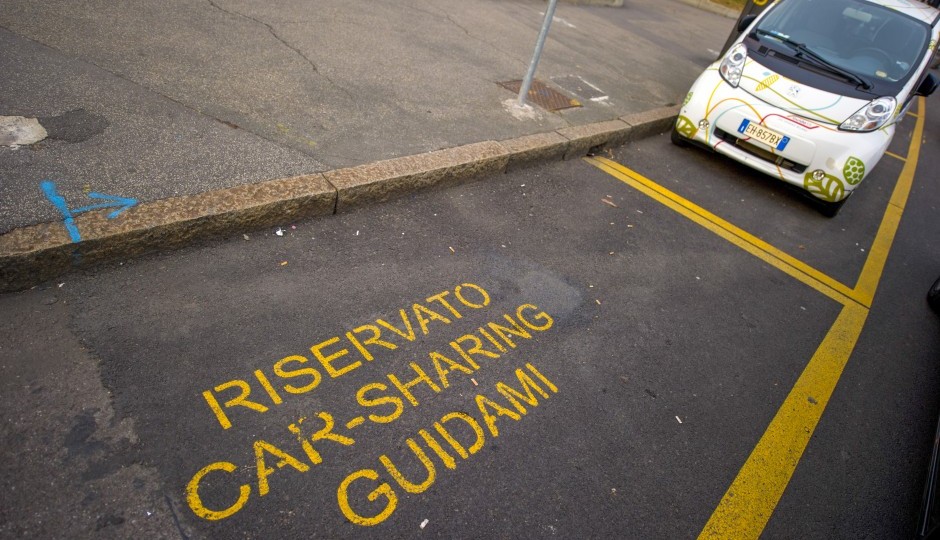How Car Sharing Can Solve Philly’s Parking Problems
When City Council approved a new zoning code back in 2012, advocates for a more walkable, cycling- and transit-friendly city had mixed reactions to the code’s new parking regulations. Although adjustments were made to decrease the city’s parking requirements — allowing developers to build a minimum of one parking space for every three residential units, rather than the one-to-one requirement previously in place — the new code didn’t include parking maximums. Developers were still given the option of including as many spaces as they wanted, so long as they didn’t undercut the minimums.
Less discussed were provisions in the new code that require for developers to provide at least one dedicated parking spot for car-share services (like Zipcar) for every 100 residential units or 100,000 square feet of office space. The code also included car sharing incentives for developers, giving them the option to reduce the overall number of parking spots if more dedicated car-share spots were created.
the total number of required parking spaces for a property may be reduced through the addition of auto-share spaces. One auto-share space may replace four (4) required parking spaces. In no case may the number of auto-share spaces provided reduce the required number of parking spaces by more than forty (40) percent.
So far, though, it doesn’t look like many developers are taking advantage of that provision. Which is a shame, because car sharing services have the potential to dramatically reduce the need for parking both curbside and off-street. How? A recent story in Governing explained:
In the case of a driver-led service like Uber, the impact is obvious: The cars are never parked, because drivers don’t make any money unless the cars are in motion. So every Uber ride means one less car in the parking lot. For a service like Zipcar or Car2Go, the cars—driven by the renters themselves—are obviously still parked, just not as much as private cars.
This explains why the city allows car-sharing companies to apply for exclusive permits from the Parking Authority for street-level spaces at a cost of only $150 per year. That’s a big subsidy for for-profit enterprises, considering daily parking costs $26 for a regular driver. Is it worth it?
Absolutely. More research would be welcome, but the studies that are out there suggest that a single car-shared vehicle can replace between nine and 13 individually owned cars. Fewer cars means less land for parking, which means more land for bigger sidewalks or parklets or bike lanes or outdoor cafes or stormwater basins or… you get the idea.
And one of the best ways cities can encourage car-sharing is by making curb-side spots available to car-sharing companies at free or discounted prices, for some pretty obvious reasons. Dedicated, reserved curb-side parking is a pretty amazing perk, one that’s unavailable to owners of private cars. These marked spots also double as some pretty primo marketing for car-share companies.
Some will argue the city shouldn’t be in the business of subsidizing the operations of any private company. But if increased car-sharing is in the best interest of the city overall—and it clearly is—than those objections seem more ideological than practical.
